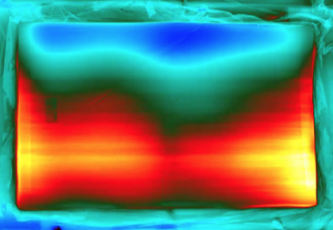Fields of spinning wind turbines inspire thoughts of earth-friendly energy, but until now, generating wind power hasn’t been as sustainable as people may have thought.
It generally requires a great deal of time and energy to cure the type of resin that makes the 150-foot-wide fiberglass turbines strong and durable. When they finally wear out after 20 or 25 years, very little of the material can be recycled.
Doug Adams, Distinguished Professor of Civil and Environmental Engineering and the Daniel F. Flowers Professor, said that made wind turbines an ideal project for the Institute for Advanced Composites Manufacturing Innovation, a consortium of industry, government and academic institutions aimed at improving the composite materials that are manufactured for use in turbines, cars, compressed gas storage tanks and a number of other products like airplanes and sporting goods.

“What better application to look at than wind power, where we think about energy and sustainability foremost in our minds? It’s a grand challenge in composites manufacturing,” said Adams, who also chairs Vanderbilt’s Department of Civil and Environmental Engineering.
The problem has a solution in sight, thanks to a new recyclable resin that cures at room temperature provided by industry partner Arkema. This new resin, called Elium, creates its own heat and cures without creating flaws in the fiberglass. Unlike its predecessor, this resin doesn’t prevent the fiberglass from being recycled.
The nation’s increasing demand for electricity has driven significant growth in the wind energy sector. The American Wind Energy Association estimates there are more than 52,000 utility-scale wind turbines operating in the U.S., and the wind energy jobs grew 20 percent in 2016. This growth is driving innovation in all aspects of the wind industry—including improvements in manufacturing efficiency, workforce training and end-of-life recycling. The long-term impact of the work led by Vanderbilt includes lower manufacturing costs, improved reliability of turbines and reduced life-cycle energy use.

Adams, mechanical engineering graduate student Christopher Nash, and the Laboratory for Systems Integrity and Reliability research staff’s role in this project for the composites institute was to test the resin’s self-setting properties using infrared imaging and produce an algorithm that manufacturers can use in setting up the process on their production lines.
“This composite materials technology is exciting because it closes the loop on sustainability in wind energy,” Adams said.
The next step is scaling up the process from test-size components to full-sized blades. As a partner in the institute, Vanderbilt will be able to take advantage of the consortium’s robust supply chain ecosystem to efficiently source the materials and manufacturing capability they’ll need, as well as provide Vanderbilt students the opportunity to work with a broad range of partners with diverse capabilities.